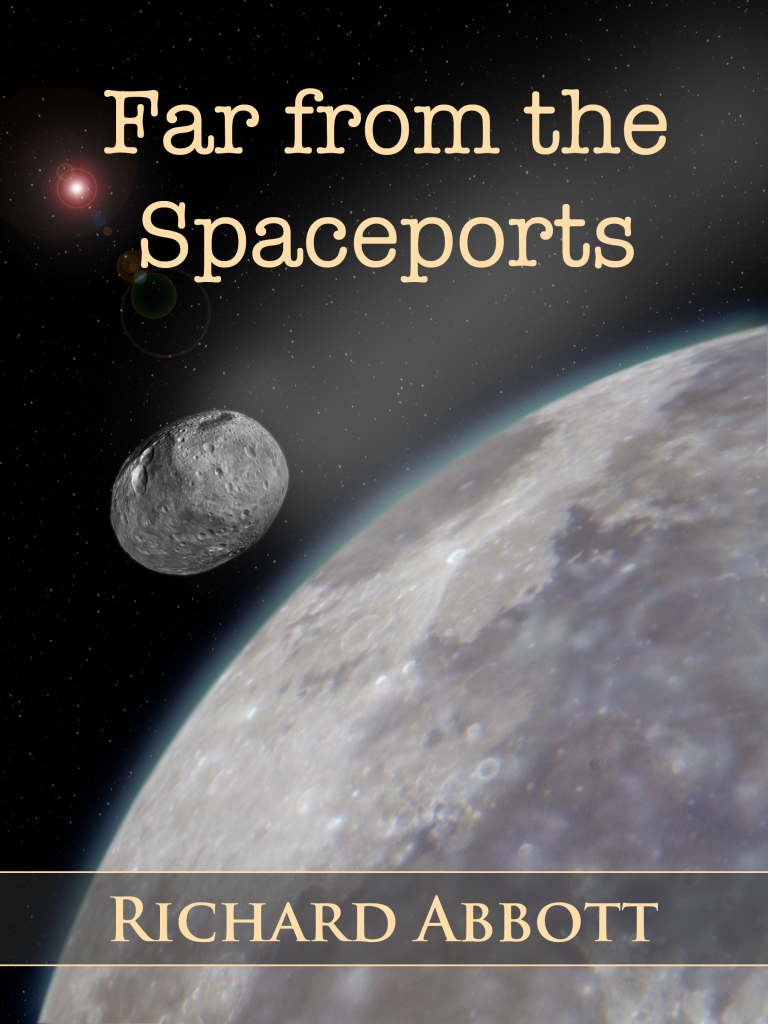
Last time I talked a bit about orbital paths for getting from the Earth to the Moon, and how there are several alternatives, each using different amounts of time and fuel. Today I want to talk a bit about orbits around Earth – the kind of trajectories used by a multitude of satellites today. This post was partly motivated by a conversation in the film Gravity – a film which I quite enjoyed for the human interactions, but was seriously disappointed by the cavalier attitude to orbital mechanics! There’s a point fairly late on where George Clooney’s character points out to Sandra Bullock’s character an orbital space station where she can find additional supplies, and directs her to fire her own capsule engines while keeping the other station central in her forward window.
It sounds good – and it would sort of work on Earth if you translate Sandra Bullock’s plight into moving cars around a car park – but there is absolutely no way that such a strategy would get her to her target up in orbit. Quite apart from the matter of getting the two space vehicles to meet up in space, there’s also the problem of matching speeds so that she could easily move across to the second capsule. Earth orbits simply don’t work like that – it is certainly possible (with sufficient fuel) to transition from one orbit to another, but getting the engine burn right is a difficult task, and one which needs to be carried out by computer program rather than optimistic guesswork.

The most energy-efficient way to transition from one circular orbit to another is by means of what is called a Hohmann transfer orbit – an elliptical path that touches both circles at a tangent. Other transfers can be used, and may well take less time to complete, but they will use more fuel. The simple picture here assumes that both orbits are in the same plane – in a more general case it will be necessary to shift orbital plane from the old angle to the new one. But that aside, just looking at the two objects shows that the engine burn required is not at all directed straight at the target – indeed in this case it is almost diametrically opposite. (Hohmann transfers are also used on a larger scale for trajectories between planets, and exactly the same principles apply).
Now, the great majority of satellites are in Low Earth Orbit (LEO) – not a single trajectory, but a zone of space from about 200 to 2000km altitude, or equivalently with an orbital period of under two hours. LEO is easy to get to, and hence economical of fuel, but especially at the lower end of the range, orbits will slowly decay because of the very tenuous atmosphere still present there – hence either the lifetime is limited, or occasional actions must be taken to lift the orbital height. A consequence of such a low orbit is that the spacecraft transits the sky quickly – or equivalently, any one part of Earth stays in view for only a short time. Satellites providing the various GPS systems orbit much higher, around 20-30000km (12-15 hours). And higher still, a little over 40000km, are the geostationary orbits, in which a satellite takes 24 hours to orbit the planet, and so appears to be stationary over a particular place.

What does this have to do with writing? Well, maneuvering around a planet in low orbit is a tricky thing to get right, and not something you want to leave to intuition. In Far from the Spaceports, Mitnash gets a shuttle up to his spaceship, The Harbour Porpoise, which the AI persona Slate has been keeping in LEO waiting a decision on where they were heading off for. They end up going off to the asteroid belt, but their first move would be to get out of LEO and leave Earth’s gravity well behind. That’s not something where Mitnash would glance out of the window, push a couple of buttons, and hope for the best – Slate, or possibly the ship’s own onboard controller, would do some real calculations before firing up the main engines. And then off they go…
Next time, a zany idea I just read about concerning moving the orbit of the Earth itself…

